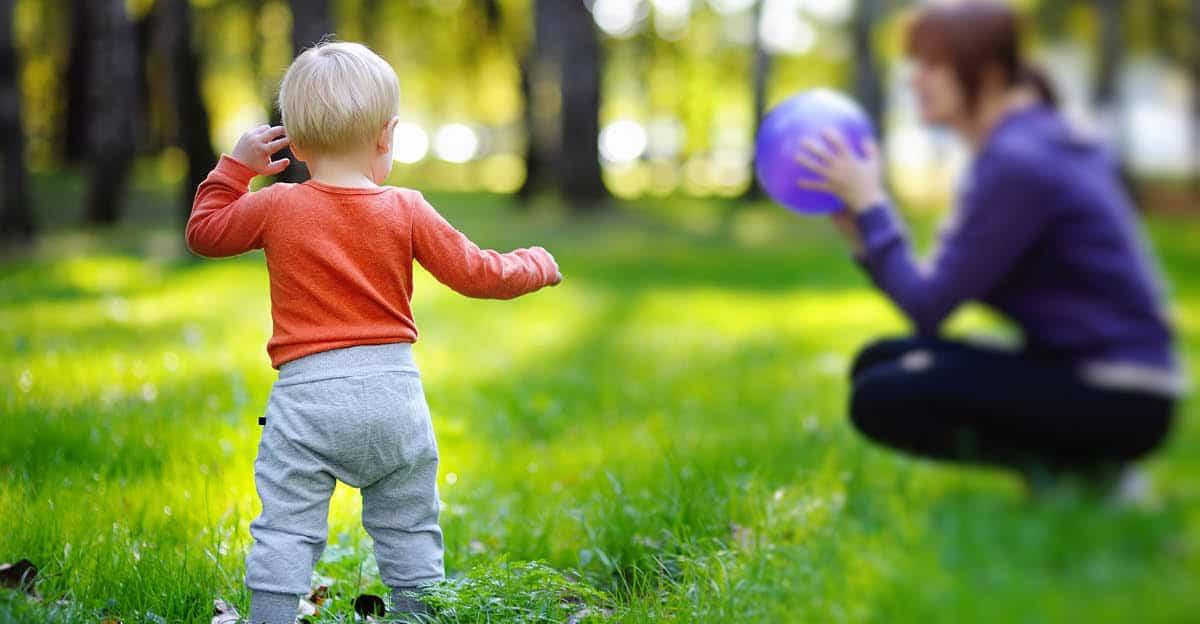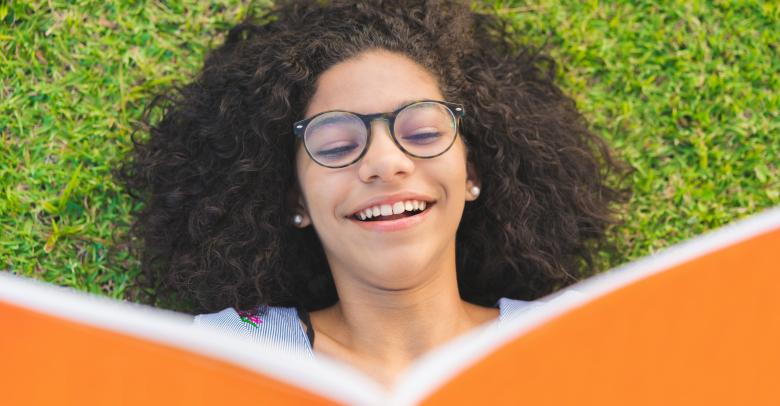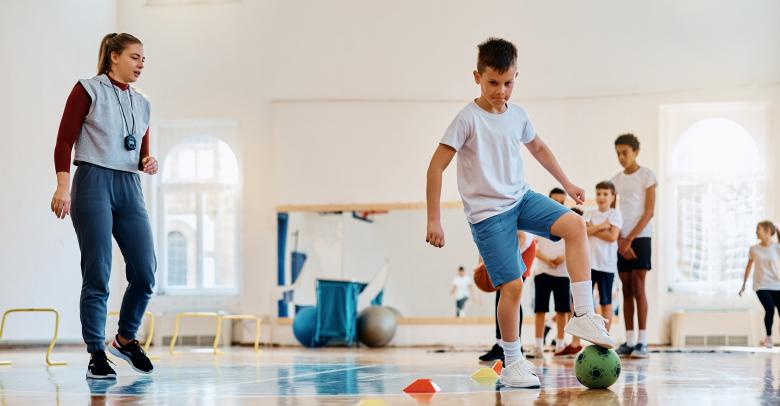As a parent, sometimes the things you hear experts say about children’s health, and the things you observe in your own kid(s), can seem conflicting. You’ve likely heard about initiatives to increase physical education programs in elementary schools. Yet, when you witness your own elementary-age kids speeding around the kitchen in a game of tag with the family cat, it certainly seems like they have limitless energy at this age, do they really need a program at school to get them to be active?
Here’s the thing about physical education: yes, these programs encourage physical activity, but it’s the second part of the phrase the education portion that’s the key factor, and the reason all young kids should have access to formal physical education classes.
4 Reasons Why Kids Need Physical Education
Your kids may not need any help being active (your exhausted pet can likely attest to this); but they won’t learn about nutrition, fitness, and the importance of a healthy lifestyle on their own. Here’s why it’s so important to offer physical education classes to children, especially when they’re young.
Promoting Lifelong Fitness
For years, studies on childhood obesity and the importance of health and wellness on development have painted a clear picture of the ways children can benefit from physical education.
According to the Centers for Disease Control and Prevention (CDC), the childhood obesity rate has more than doubled for both preschool children (ages 2-5) and adolescents (ages 12-19). For children between the ages of six and eleven, the rate has tripled. Obese adolescents are also more likely to develop prediabetes, a condition in which blood glucose levels indicate a high risk for development of diabetes, as well as bone and joint problems.
While encouraging physical activity is the first step to combating childhood obesity, educating our children about fitness is the step that will carry them into healthy adulthood. Curriculum-based physical education programs teach kids how to exercise, using safe and proper techniques, and how to keep their muscles and hearts strong.
When we teach our kids about health and wellness at a young age, and build a positive association around being active, they are much more likely to develop healthy habits that continue throughout their lives.
Boosting the Brain
There’s more to physical education than just keeping your body fit it also keeps your brain fit. Scientists have discovered a link between physical fitness and brain functionality in children. Researchers found that the brains of children who are more fit have a bigger hippocampus (the region of the brain connected to memory). These kids performed better on memory tests and activities than their less-fit peers.
The cognitive benefits of PE extend into classroom learning multiple studies have found an association between physical activity and increased concentration in school. Several studies have researched the link between physical education and cooperative learning a teaching strategy in which groups of students work together to improve their understanding of a particular subject. Children learn the importance of team-building and collaboration through physical group activities.
While many physical education programs face the risk of being cut from academic curriculum in favor of increasing class time, the reality is that active children tend to perform better in subjects like reading and mathematics.
Eating Right
A big part of physical education is teaching kids how to make healthy choices for their bodies and that includes food choices. A comprehensive physical education curriculum includes lessons about nutrition and diet, teaching children (at levels they can understand) why certain foods are good for their bodies.
We know that a nutritious diet is important for growth and development; but it’s easy to forget the true impact that poor nutrition can have on a growing child. Young kids who lack nutrients in their diets are often more susceptible to illness, have trouble focusing, and sometimes show emotional side effects.
Physical education classes teach kids about the importance of various food groups, and how they interact with the body in every area from your bones and heart, to your brain and even your mood. Learning how to make smart food choices will help your children as they get older and need to make more choices on their own.
Building Social Skills
Formal physical education can also help facilitate healthy social interactions. Early on in life, children develop their sense of identity and social cues by engaging in various group dynamics.
Physical activity like running around on the playground builds muscles and improves cardiovascular health, while physical education structured classes in which kids have to complete physical activities also exercises a child’s self control and develops cooperative skills and consideration for others. Playing team games and activities in a supervised environment allows opportunities for children to learn social skills, like how to lose and win graciously.
Participating in group activities and team sports encourages leadership, community engagement, and even altruism. For very young kids, basic and essential lessons like sharing and speaking kindly to others are encompassed in a physical education setting.
Physical education plays a substantial role in shaping childrens health and development, teaching them valuable life skills in fitness, focus, nutrition, and social interactions. A good understanding of these topics can make the difference between your child growing into a healthy adult, or falling into lifelong unhealthy habits.






Leave a Reply